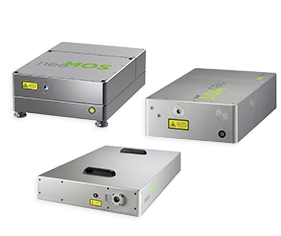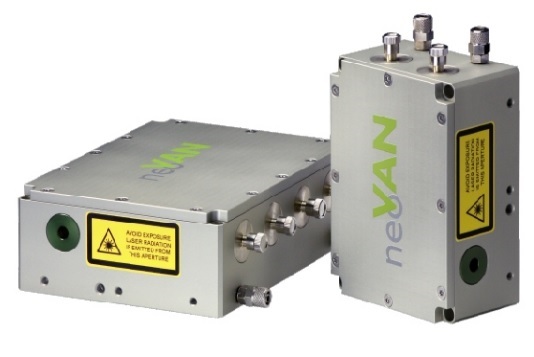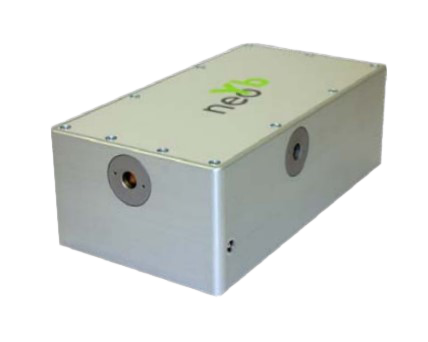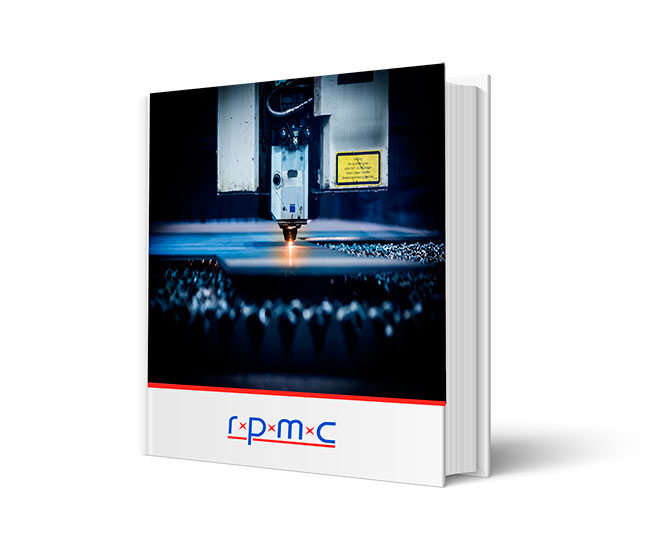neoMOS
DPSS Laser, ps/fs Pulsed, 1064nm, up to 100W, up to 500µJ, up to 80MHz
Key Features:
- Customizable Parameters
- Ultra-compact footprint
- Highly flexible & scalable design
- Cold ablation: minimized HAZ
- Low maintenance
- Pulse duration: 700fs to 70ps
- Power: 5 – 100W | Energy up to 500µJ
- Repetition rates: single-shot to 80MHz
- Perfect TEM00 beam quality
There are many configurations and options available. If you do not see exactly what you need below, please contact us!
Need Quantities? Have a question?
POPULAR CONFIGURATIONS:
Picture |
Part Number |
Part Description |
Datasheet |
|
|---|---|---|---|---|
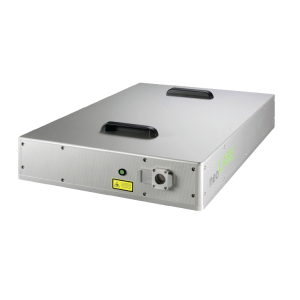
|
neoMOS-700fs |
Ultrashort Pulse Laser, 1064nm, 50W, 700fs, 500 µJ, single shot to MHz |
|
Get Quote |
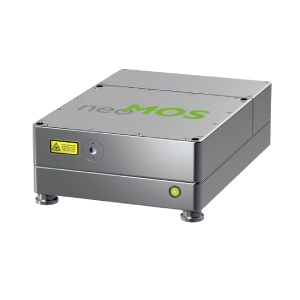
|
neoMOS-10ps |
Ultrashort Pulse Laser, 1064nm, 50W, 10ps, 250 µJ, single shot to 40 MHz |
|
Get Quote |
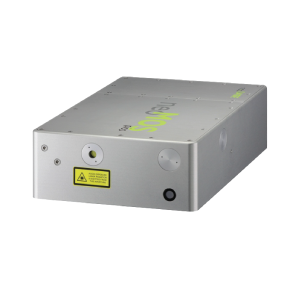
|
neoMOS-70ps |
Ultrashort Pulse Laser, 1064nm, 15W, 70ps, 250 µJ, single shot to 80 MHz |
|
Get Quote |
The neoMOS ultrashort pulse laser series is a reliable, low-maintenance system designed for 24/7 industrial use. The ultra-compact laser head has the smallest footprint available and can be customized for a range of laser parameters, allowing easy integration and flexibility with various demanding processing applications, including glasses and plastics. It offers pulse widths from 700fs to 70ps, repetition rates from single-shot to 80MHz, up to 500µJ pulse energy, average output powers up to 100W, multi-megawatt peak powers, and perfect TEM00 beam quality @ 1064nm.
Benefits:
- Reliable and low-maintenance system: Customers can rely on the neoMOS laser series to work consistently and efficiently with minimal upkeep required, which can save time and money on maintenance and repair costs.
- Small footprint for easy integration: The compact size of the laser head makes it easy to integrate into different systems, which can save space and enable more versatile applications.
- High stability and long lifetime: The neoMOS laser series is designed for 24/7 industrial use with high stability and long service life, which can provide peace of mind and minimize downtime.
- Flexible and customizable: Customers can customize the neoMOS laser system to meet specific needs and requirements, providing a wide range of laser parameters and pulse durations. This flexibility can allow for more precise and effective processing.
- Suitable for processing demanding materials: The multi-megawatt level peak-power and ultrafast pulses make it suitable for processing even the most demanding materials, including transparent glasses and plastics. This capability can enable new applications and improve efficiency in existing ones.
- MOPA architecture for various laser parameters and pulse durations: The MOPA architecture of the neoMOS laser series combines amplifier modules with different oscillators, allowing for various laser parameters and pulse durations from the same laser platform. This versatility can provide more options and tailored performance.
- Variable pulse durations and repetition rates: Continuous-wave laser modulation to achieve variable pulse durations and repetition rates, enabling the generation of low-noise pulsed single-frequency systems. This capability can allow for more precise and controlled processing.
- Excellent TEM00 beam quality: All neoMOS laser systems have a nice Gaussian beam with good beam quality, which can provide more accurate and consistent processing results.
The multi-megawatt level peak-power and ultrafast pulses make the neoMOS series suitable for processing even the most demanding materials, including transparent glasses and plastics. Its typical applications include photovoltaic and electronics production, display glass processing, as well as security and decorative marking.
The neoMOS laser series has a MOPA architecture that combines amplifier modules with different oscillators, allowing the addressing of various laser parameters and pulse durations from the same laser platform. Different seed laser technologies are available for the pulse duration range of a few nanoseconds down to about 100 fs, such as active (AQS) and passive q-switched (PQS) oscillators, modulated laser diodes (LD), or pulse-picked mode-locked oscillators (ML).
The neoMOS laser series offers continuous wave laser modulation to achieve variable pulse durations and repetition rates, enabling the generation of low-noise pulsed single-frequency systems. The laser system has been demonstrated to achieve energy levels greater than 40 mJ or greater than 200 W average power. The system comes equipped with standard neoCON software that allows users to set all relevant laser parameters and monitor system control signals and temperatures.
If you have any questions or need more information, please contact us.
neoMOS “SMAART”:
The SMAART combination of pico- and femtosecond laser pulses within one compact laser system. The alliance is based on high reliable and low maintenance fiber oscillators and robust solid-state amplifiers. The newly developed laser system further expands the neoMOS pulse duration range into the are of less than 900fs up to a few tens of picoseconds, or even nanoseconds.
- Pulse durations: 40ps / 900fs
- Output Power: 100W / 75W
- Pulse Energy: Up to 500µJ / 400µJ
- Repetition Rates: 200kHz to 2MHz
- Beam Quality: TEM00 / M2 < 1.3
neoMOS 700fs:
This femtosecond laser series combines the reliability and low maintenance of a state of the art fiber oscillator with a solid-state amplifier. The newly developed laser system further expands the neoMOS pulse duration range into the area of less than 700fs. The CPA free technology allows for bandwidth limited pulses in the smallest footprint available.
- Pulse duration: < 700fs
- Output Power: 100W
- Pulse Energy: Up to 400µJ
- Repetition Rates: Single-shot to MHz
- Beam Quality: TEM00 / M2 < 1.3
neoMOS 10ps:
This picosecond laser series combines the reliability and low maintenance of state of the art picosecond oscillators with a solid-state amplifier. The ultra-compact laser head has the smallest footprint currently available, enabling easy system integration. High stability and long lifetime are provided by design for 27/7 industrial use.
- Pulse duration: < 10ps
- Output Power: Up to 50W
- Pulse Energy: Up to 250µJ
- Repetition Rates: Single-shot to 40MHz
- Beam Quality: TEM00 / M2 < 1.3
neoMOS 70ps:
This picosecond laser series combines the reliability and low maintenance of a state of the art picosecond laser diode with a solid-state amplifier. Customized combinations with different output powers and flexible repetition rates are integrated into an ultra-compact laser head, enabling easy system integration. High stability and long lifetime are provided by design for 24/7 industrial use.
- Pulse duration: 70ps
- Output Power: 15W
- Pulse Energy: Up to 250µJ
- Repetition Rates: Single-shot to 80MHz
- FlexPulse Technologies
- Beam Quality: TEM00 / M2 < 1.3
| Wavelength (nm) | |
|---|---|
| Description | DPSS Laser, ps/fs Pulsed, 1064nm, up to 100W, up to 500µJ, up to 80MHz |
| Type | Pulsed DPSS Lasers, Ultrafast Lasers, Ruggedized, Adjustable Rep Rate, High Peak Power, Customizable |

 BUY NOW
BUY NOW 